In the following sequence of reactions, products (A) to (H) are formed:
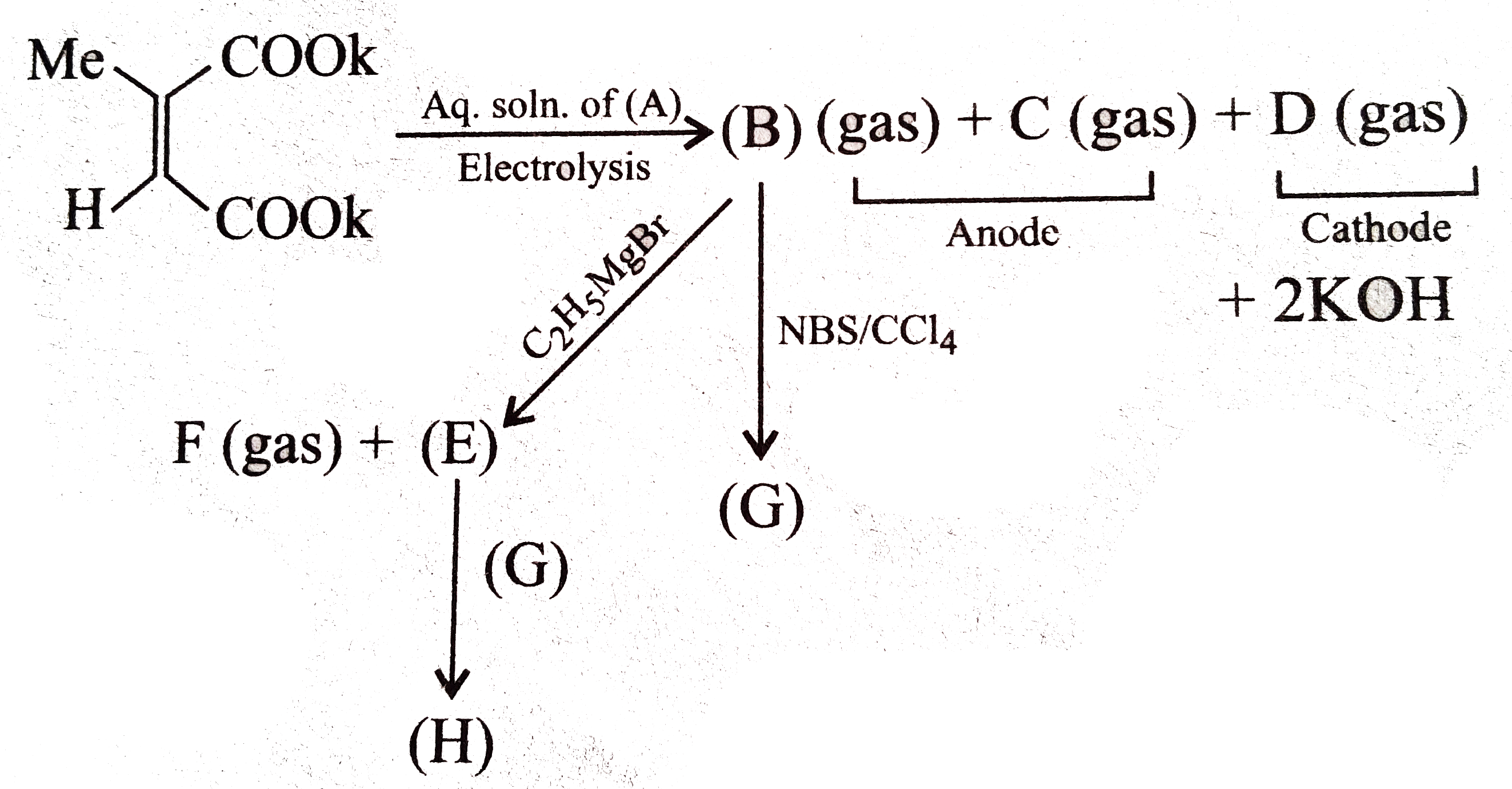
The gases (B), (C), and (D), respectively, are:
The correct Answer is:D
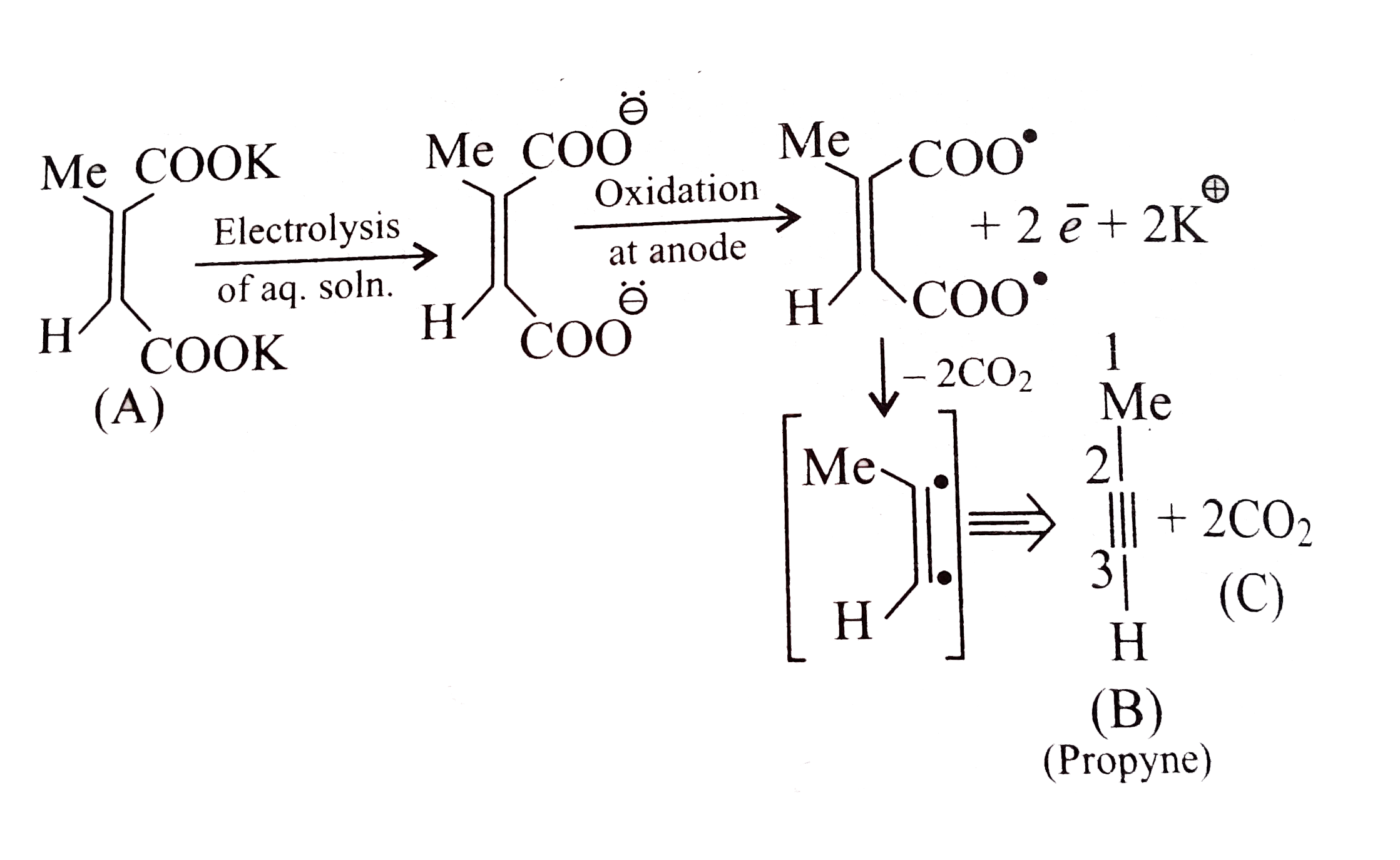
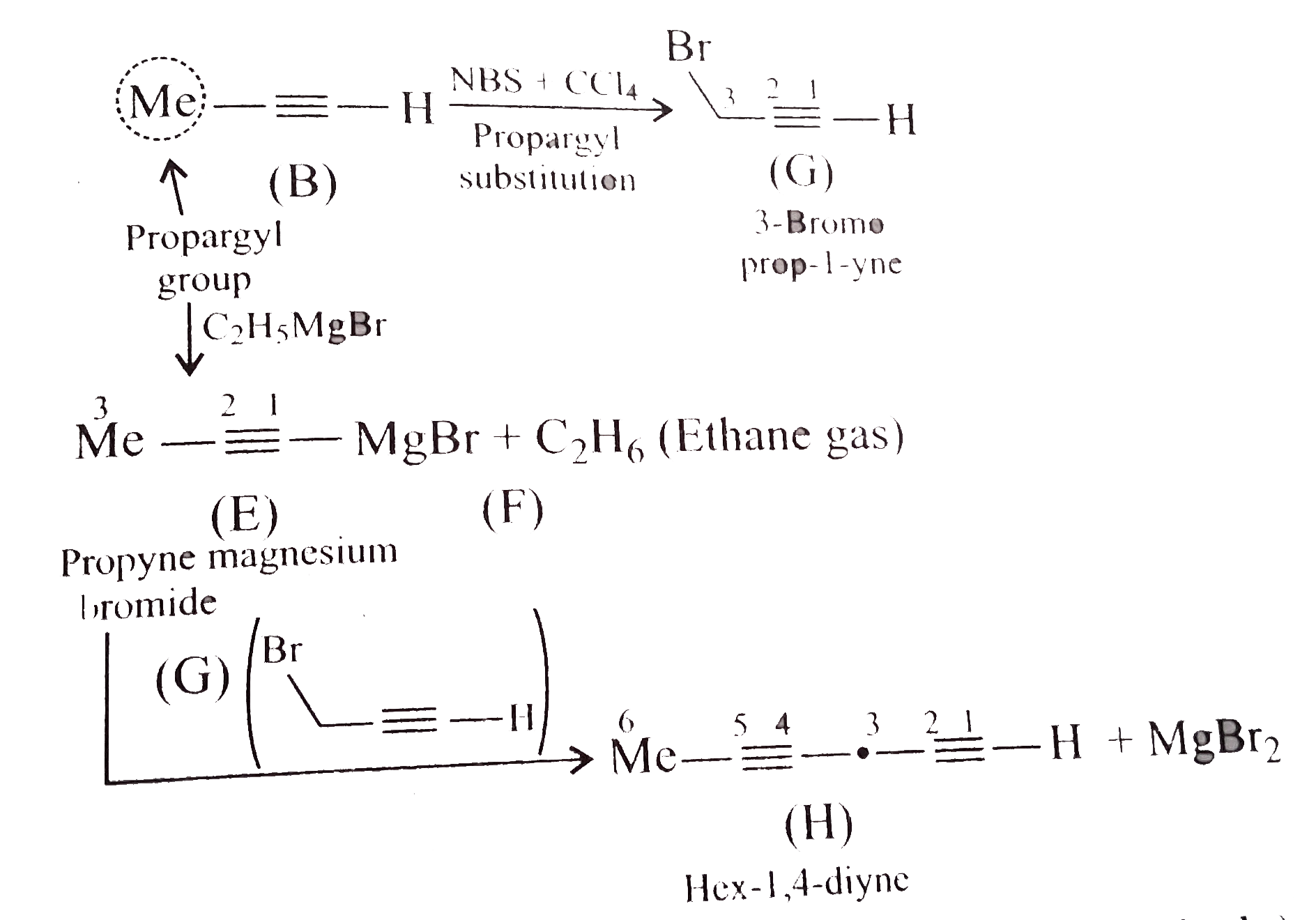
Reduction of H2O takes place at cathode since reduction potential of H2O> reduction potential of K⊕ ions.
At anode 2 mole of CO2 + 1 mol of propyne gas is obtained by 2 faraday (since two ¯e are produced).
2 faraday ⇒ 3 mol of gases under standard conditions (1 bar, 298K)
⇒3×24.7 litres =74.1 litres
So the answer is (d).
Topper's Solved these Questions
- ALKYNESBook:CENGAGE CHEMISTRY ENGLISHChapter:ALKYNESExercise:Exercises (Multiple Correct Answers Type)
Explore 25 Videos
- ALKYNESBook:CENGAGE CHEMISTRY ENGLISHChapter:ALKYNESExercise:Exercises (Single Correct Answers Type)
Explore 30 Videos
- ALKYNESBook:CENGAGE CHEMISTRY ENGLISHChapter:ALKYNESExercise:Exercises (Subjective Type)
Explore 31 Videos
- ALKENES AND ALKADIENESBook:CENGAGE CHEMISTRY ENGLISHChapter:ALKENES AND ALKADIENESExercise:Single correct Answer
Explore 14 Videos
- APPENDIX - INORGANIC VOLUME 1Book:CENGAGE CHEMISTRY ENGLISHChapter:APPENDIX - INORGANIC VOLUME 1Exercise:chapter-7 Single correct answer
Explore 1 Video
Similar Questions
Which of the statements are correct?
View Solution
The product (B) is:
View SolutionWhy are electrons easily available to the attacking reagents in π – bonds?
View SolutionWhich of the following will declourise alkaline KMnO4solution ?
View SolutionUnder hydrolytic conditions, the compounds used for preparation of linear polymer and for chain termination, respectively, are
View SolutionIn the following sequence of reactions, products (A) to (H) are formed:

The gases (B), (C), and (D), respectively, are:
View SolutionIn the following sequence of reactions, products (A) to (H) are formed: Compound (B) is:
View SolutionIn the following sequence of reactions, products (A) to (H) are formed: Compound (C) is:
View SolutionIn the following sequence of reactions, products (A) to (H) are formed:

Compound (D) is:
View SolutionIn the following sequence of reactions, products A to D are formed:
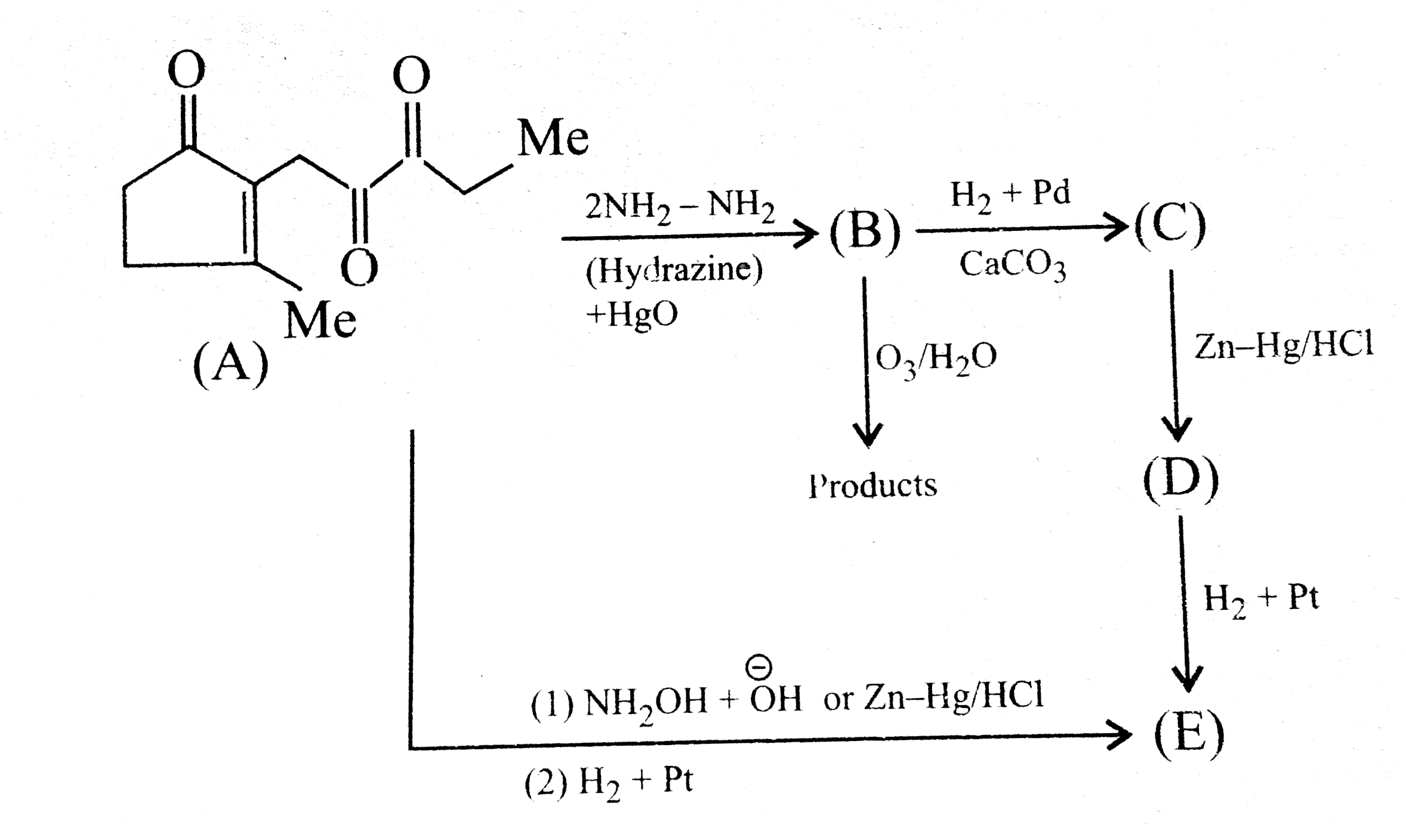
The structure of product (B) is:
View SolutionIn the following reaction sequence, the products (B) to ( E) are formed. . The structure of product (D) is :
View SolutionIn the following sequence of reactions, products A, B, C, D, and E are formed: The structure of product (B) is:
View SolutionIn the following sequence of reactions, products A, B, C, D, and E are formed:
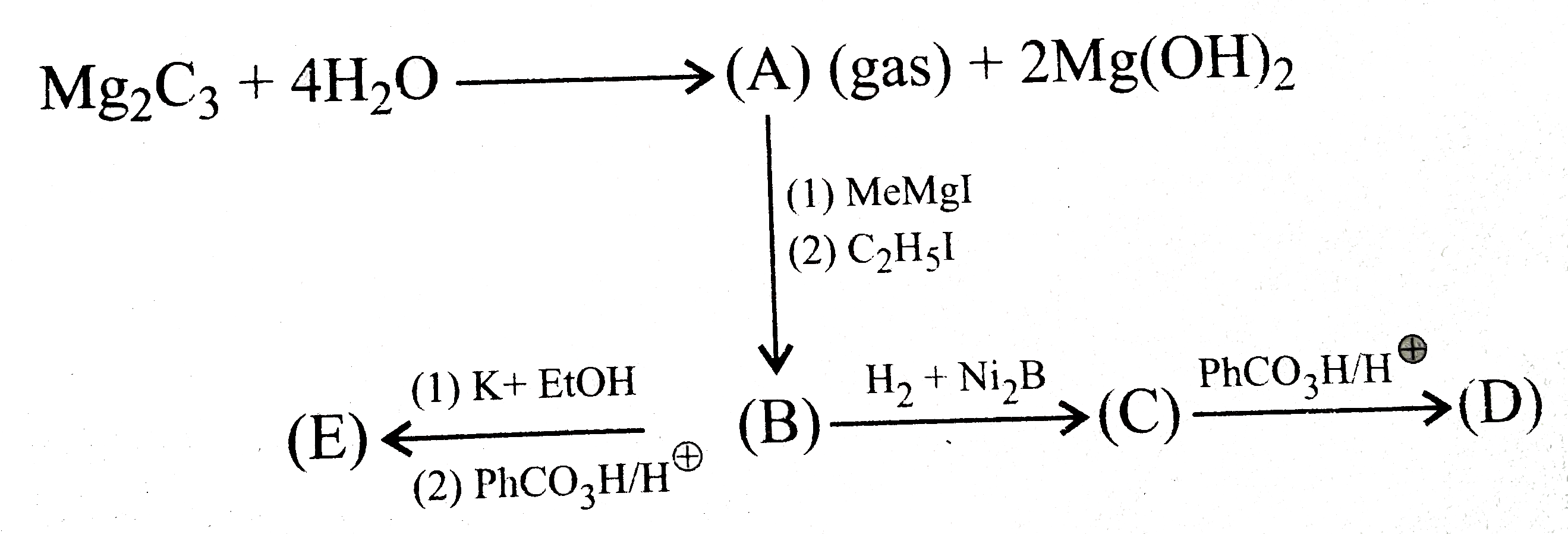
The structure of product (C) is:
View SolutionIn the following sequence of reactions, products A, B, C, D, and E are formed:

The structure of product (D) is:
View SolutionIn the following sequence of reactions, products A, B, C, D, and E are formed:

View Solution
